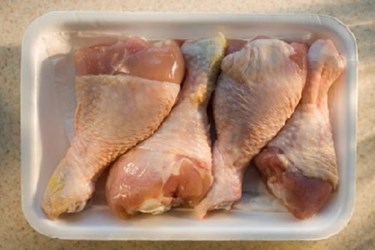The EU's New Country of Origin Labeling Rules For Meats: What You Need To Know
By Melissa Lind, contributing writer

With the new, European Union rules on Country of Origin Labeling now in effect, a lot of questions have been raised. From “what specific products and species are covered under new laws?” to “how does this differ from prior requirements,” here is what you need to know about the new regulations.
What Meats Do The New Labeling Requirements Cover?
New EU rules regarding country of origin labeling cover fresh, refrigerated, and frozen meat from goats, pigs, poultry, and sheep. The rules only involve pre-packaged meat sold to consumers at the retail or mass catering label. Member states however have the option to extend requirements to apply to non-prepackaged meats. Consequently, U.S. suppliers should verify regulations with the country to which export is intended.
What About Processed Or Prepared Meat Products?
The new EU labeling rules apply only to pre-packaged meats, not to processed or prepared meat products, such as cured meats, sandwich meats, or casseroles. However, the European Commission has indicated additional requirements for prepared meat products are still under consideration and regulations may be extended in the future.
Are Multi-Meat Packages Covered Under The New Ruling?
If multiple types of meat are included in the pre-packaged container, such as barbeque packs popular in Europe, labels must include information regarding each type of meat. Meat preparations, such as sausages, are currently exempt.
What About Packaged Beef Products?
Across the EU, beef labeling requirements were enacted in 2002 and are stricter than the new regulations covering other types of meat. Unprocessed beef products must include country of birth plus information about rearing and slaughter.
Why Are The New Labeling Requirements Different From Beef?
An impact assessment was performed and found that for meat types under the new legislation, consumers are most interested in the place of farming rather than where the animal was born. Beef regulations were enacted at an earlier time period in which the country of birth was a major concern for consumers. Additionally, traceability regulations for goat, sheep, pork, and poultry do not currently provide information about country of origin. Requiring this information would also force implementation of extensive changes to current tracking systems. Typical patterns have also shown that beef animals are more likely to undergo large-scale movements passing national boundaries. Pigs, poultry, sheep, and goats are more likely to be consumed in their country of birth.
Do The New Rules Disallow Country Of Origin Flag Logos?
The voluntary addition of logos or flags on packaged meats is not prohibited. However, these types of logos are not sufficient in terms of regulatory compliance. Printing of information specifically regarding “reared in” and “slaughtered in” are now essential for compliance.
What About Other Meats?
The EU Commission has not yet passed regulations regarding other types of meat, but is currently in process of addressing this issue.
